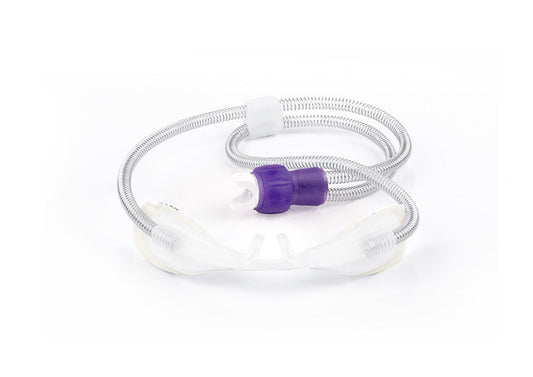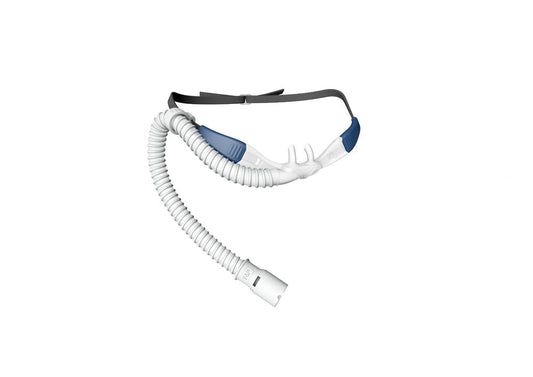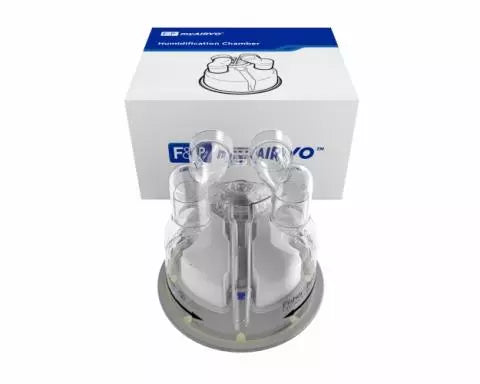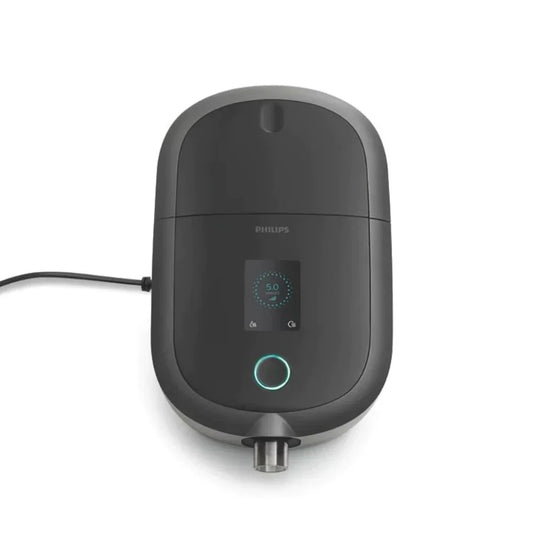CPAP accessory maintenance and cleaning: common mistakes to avoid

Proper maintenance of your CPAP equipment is essential to ensure the effectiveness of your sleep apnea treatment. It will also help extend the lifespan of your accessories.
However, many people still make maintenance mistakes that can impair the performance of their device or even promote the growth of bacteria and mold.
In this article, we review the most common mistakes when cleaning CPAP masks, tubing and humidifiers , and we give you concrete tips for adopting an optimal maintenance routine.
Why is maintaining your CPAP equipment so important?
CPAP (continuous positive airway pressure) therapy keeps your airways open during sleep, helping you breathe normally throughout the night.
However, your device — just like your mask, tubing and water reservoir — is exposed daily to moisture, heat and bacteria from your mouth and the surrounding air.
Inadequate maintenance can lead to:
-
an accumulation of mineral deposits and dirt ,
-
bacterial proliferation ,
-
a reduction in comfort and treatment effectiveness ,
-
and even respiratory or sinus infections .
That is why it is crucial to regularly clean your CPAP accessories and replace them according to the manufacturer's recommendations .
👉 Check out all the maintenance accessories
Mistake #1: Cleaning the CPAP mask with household cleaning products
This is probably the most common mistake. Scented dish soaps, multi-purpose cleaners, and disinfectant wipes often contain harsh chemicals that can damage the silicone of your mask.
What to do :
-
Use a mild, unscented soap or a cleaner specifically designed for CPAP equipment , such as products from the Pürdoux or CPAPology range, which are available here.
-
Wash the cushion and frame of your mask every day or at least 3 times a week .
-
Rinse with lukewarm water and allow to air dry on a clean surface, away from direct sunlight.
Mistake #2: Neglecting to clean the tubing
The tubing connects your mask to the CPAP machine. Due to condensation, it becomes an ideal environment for mold and bacteria.
What to do :
-
Clean the tubing once a week with warm soapy water, rinse thoroughly, then hang it to dry completely.
-
You can use a CPAP tube holder to facilitate drying and prevent creases, available here.
-
Replace the tubing approximately every 6 to 12 months , depending on its condition and the manufacturer's recommendations.
Mistake #3: Forgetting to clean the humidifier's water tank
The humidifier improves your comfort by adding moisture to the air, but if it is not cleaned properly, it quickly becomes a breeding ground for bacteria and mineral deposits.
What to do :
-
Use only distilled water , never tap water. This prevents limescale buildup.
-
Empty the tank every morning , let it air dry and clean it once a week with mild soap or a diluted white vinegar solution (1 part vinegar to 3 parts water).
-
Replace the tank as soon as it shows any stains or cracks — you can find compatible models here.
Mistake #4: Forgetting to clean or change the filters
The filters in your CPAP machine prevent dust, pollen, and other particles from entering your device. Neglecting their maintenance reduces the quality of the air you breathe.
What to do :
-
Check the filter every week .
-
Replace it every 2 to 4 weeks for disposable filters, or every 3 to 6 months for reusable filters.
-
Find the filters compatible with your device (ResMed, Philips, Fisher & Paykel, etc.) in our online store .
Mistake #5: Not drying accessories properly
Residual moisture is the main enemy of your CPAP equipment. It promotes bacterial growth and reduces the equipment's lifespan.
What to do :
-
After each cleaning, gently shake the parts to remove excess water.
-
Place them on a clean, non-porous surface and away from direct sunlight .
-
Avoid drying with a hairdryer or in the sun, which can deform the silicone.
Mistake #6: Leaving equipment exposed to dust
Even after cleaning, your equipment must be protected from dust and contaminants.
What to do :
-
Store your mask, tubing and reservoir in a storage box or in a breathable bag designed for this purpose.
-
Avoid bathroom or kitchen surfaces, which are often damp and full of particles.
What is the ideal frequency for a complete service?
Here is a summary of the best maintenance practices recommended by the manufacturers:
| Accessory | Cleaning frequency | Replacement frequency |
|---|---|---|
| CPAP mask | Daily to 3 times/week | 3 to 6 months |
| Tubing | 1x per week | 6 to 12 months |
| Water tank | Daily + weekly cleaning | 6 to 12 months |
| Filters | Weekly | 1 to 3 months |
| Harness (headgear) | 1x per month | 6 to 12 months |
Bonus tip: adopt a weekly routine
Establishing a fixed cleaning routine (for example, every Sunday morning) helps maintain consistent hygiene. Some users also choose to use an automatic ozone or UV cleaning system , such as the Lumin, available at CPAP-Experts.ca.
In conclusion
Regular and proper maintenance of your CPAP equipment isn't just about comfort; it's an essential part of your sleep apnea therapy . By avoiding common mistakes and following professional advice, you'll extend the life of your accessories, reduce the risk of contamination, and enjoy healthier, more restful sleep.
On our blog
To discover more tips on sleep apnea, visit our blog : you will find useful articles on choosing the right device, travel advice or seasonal adjustments to your treatment.












